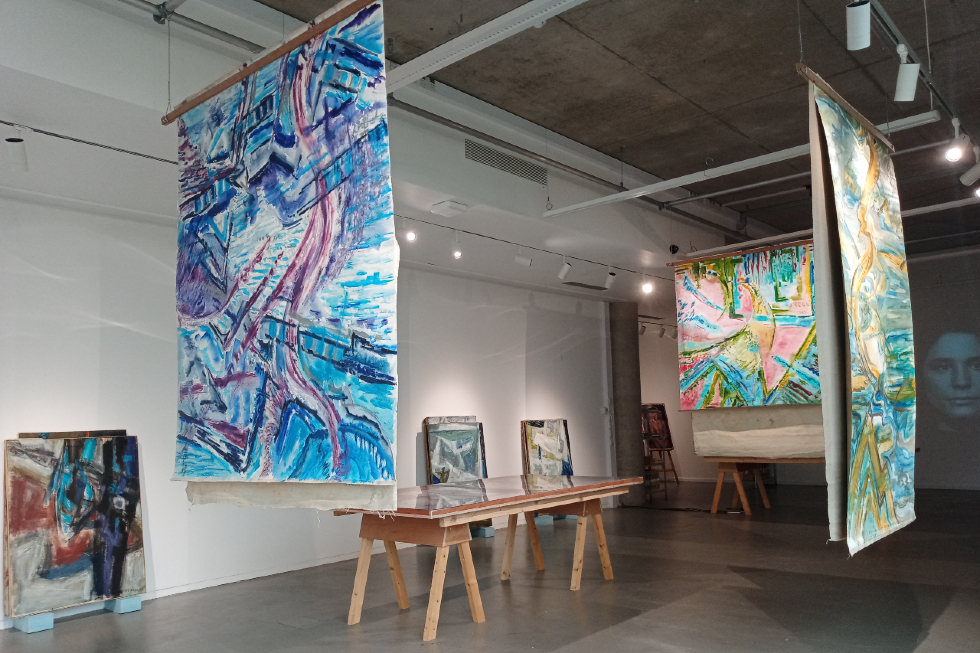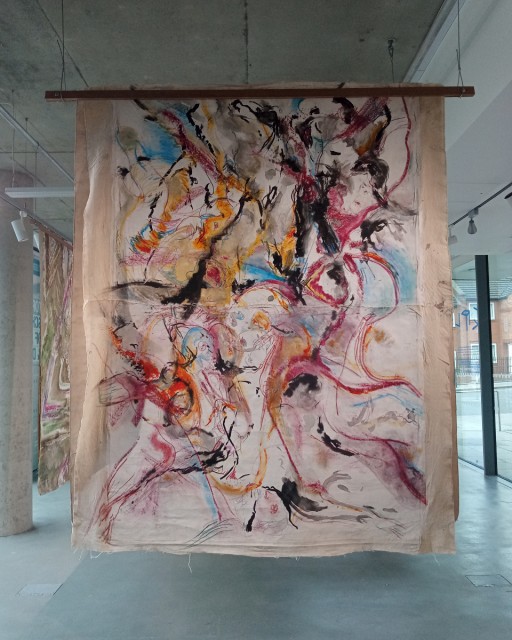Fanchon Fröhlich: The Wrong Sex – Reviewed

In the clamour to redress the balance of art history, some will inevitably continue to slip through the cracks. But a new retrospective exhibition suggests that an until now overlooked artist is worthy of consideration…
Current Whitechapel Gallery exhibition Action, Gesture, Paint: Women Artists and Global Abstraction 1940–70 has drawn together 150 works by international women artists to reframe previously exclusionary conversations around modernism. Included among them are names such as Helen Frankenthaler, Lee Krasner, and Joan Mitchell. There are also those that, owing largely to abstract expressionism being a boys’ club – notoriously so – have frequently been left out of the equation entirely. (It comes as little surprise, therefore, that many should be practically unheard of by audiences.) As such, Action, Gesture, Paint has joined a slew of shows making the case for an urgent reassessment of the art historical canon.
But among its more than 80 artists one name is still missing in action – especially if a new exhibition at Liverpool John Moores University’s Exhibition Research Lab is anything to go by. The artist in question is Fanchon Fröhlich who, throughout her life, was in touch with leading philosophical, scientific and artistic circles both at home and abroad.
Born in Iowa in 1927, Fröhlich (nee Audrey Fanchon Aungst) emigrated to the UK in 1949 and, following a period of study at Oxford, eventually made her home in Liverpool, where she studied painting on a postgraduate scholarship at the city’s art college. With Liverpool as a base, she developed key networks and relationships; not least with prominent St Ives School painter Peter Lanyon and, in mid-60s Paris, the sculptor László Szabó, and painter and printmaker William Hayter. Around this time, she also met Jaqueline de Jong, an artist whose own work is currently enjoying a resurgence in international attention.

Despite embedding herself in the art world and being in close proximity to establishment figures – she exhibited, for example, alongside the likes of Marcel Duchamp and Joan Miró – Fanchon Fröhlich has nevertheless been somewhat lost to the mists of time. But this exhibition subtitled The Wrong Sex is an attempt to address perceived wrongs that led to what its organisers clearly feel is a glaring oversight.
It’s fair to say they might be on to something. The larger-scale works, presented hanging freely in space, bear testimony to Fröhlich’s command of and confidence with paint: an expressive extension of self, expertly wielded. Unframed, they have the appearance almost of having just been finished and hung to dry. And, weaving in, around and behind them, it is possible to trace – via a calligraphic motion here, intuitive spontaneous flourish there – the scope and sweeping gestural impulse of the artist.
Working across various mediums (as well as painting, she was a printmaker and draughtsperson), Fröhlich was also prolific; alongside the walls of the relatively limited gallery space, there rests many additional paintings. The intention with these is to swap them in on a roughly bi-weekly basis as the exhibition continues – a demonstration of output and progression. In addition, three vitrines augment and complement the paintings, packed as they are with ink drawings, studies and ephemera. Speaking to the breadth and depth of her archive (this is its first display anywhere in the world), it’s a treat to gain such insight into the life and process of so unfamiliar an artist.
I’ve been careful thus far not to tease out any correspondences her oeuvre may share with far better-known abstract expressionists she would have thought of as her contemporaries. But, to my eyes, the works selected here do more than enough to beg the question (one asked in an essay accompanying the exhibition text): How is it possible she had been so ignored? And: is it possible that she will continue to be?
In the clamour to redress the balance of art history and the so-called canon, some will inevitably continue to slip through the cracks. However, Fanchon Fröhlich: The Wrong Sex, makes a convincing argument that this artist, for one, can no longer be overlooked; wider recognition should follow, so that she is resituated to once again be part of the conversation. Fröhlich’s time, belatedly, may finally have come.
Mike Pinnington
Fanchon Fröhlich: The Wrong Sex continues at LJMU’s Exhibition Research Lab until 4 May





